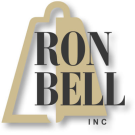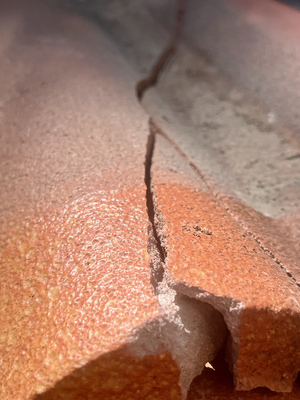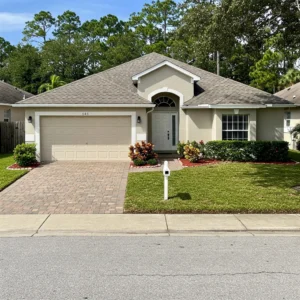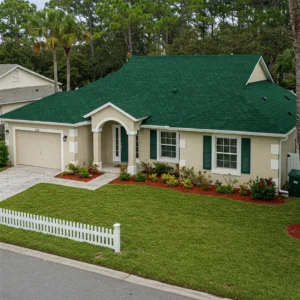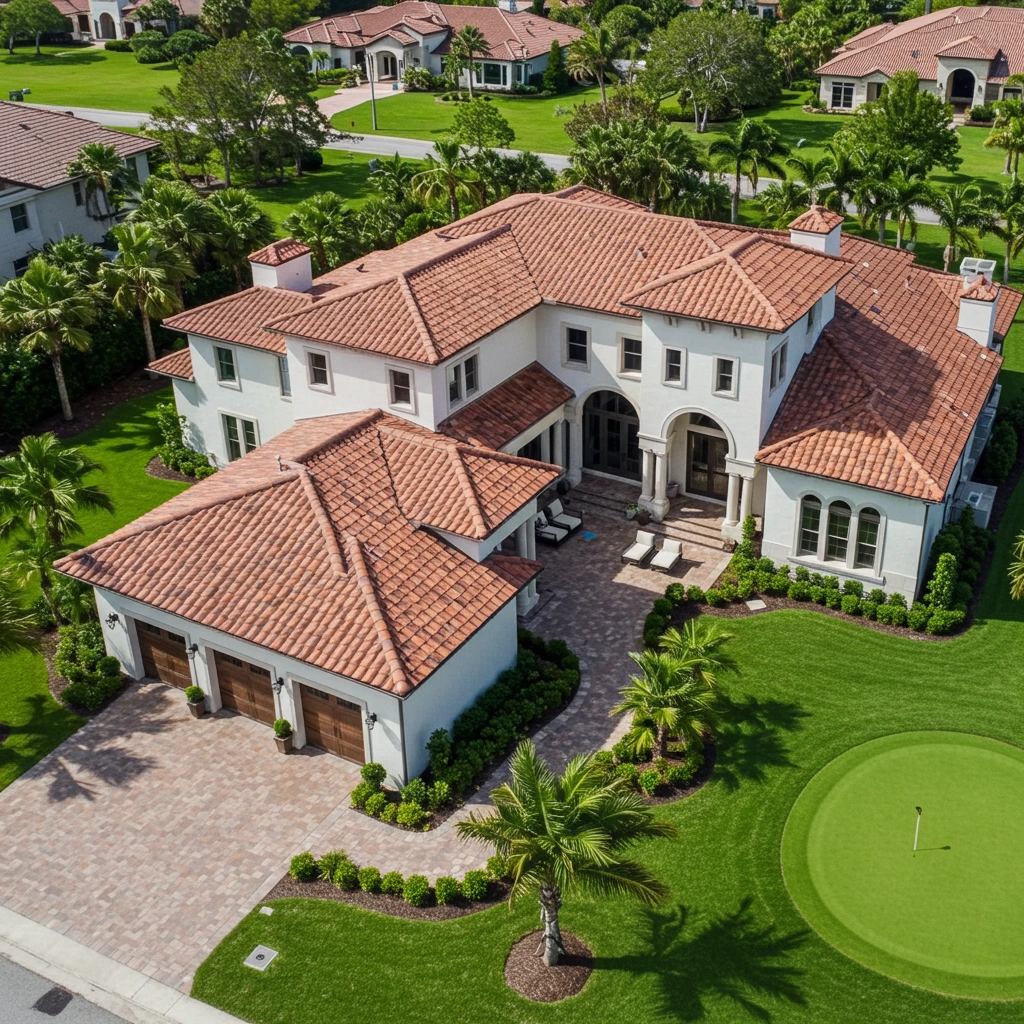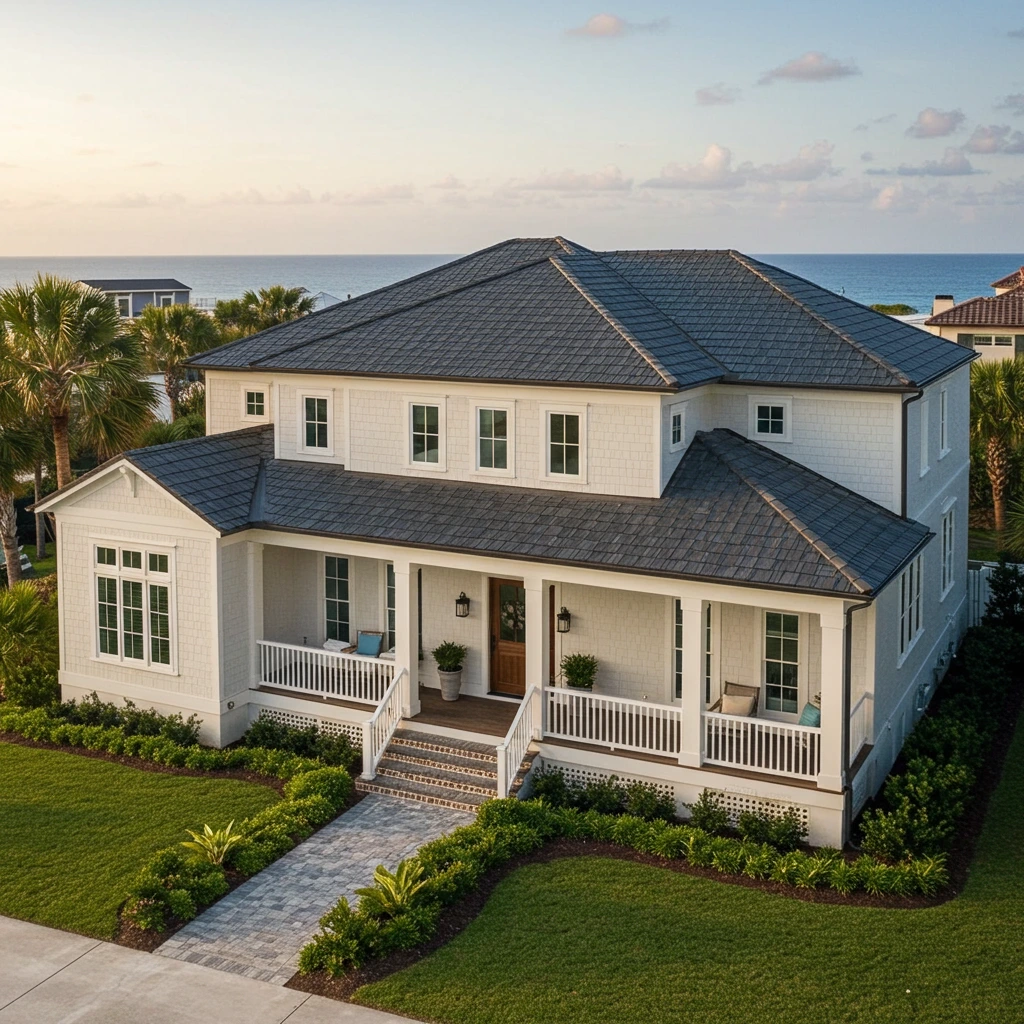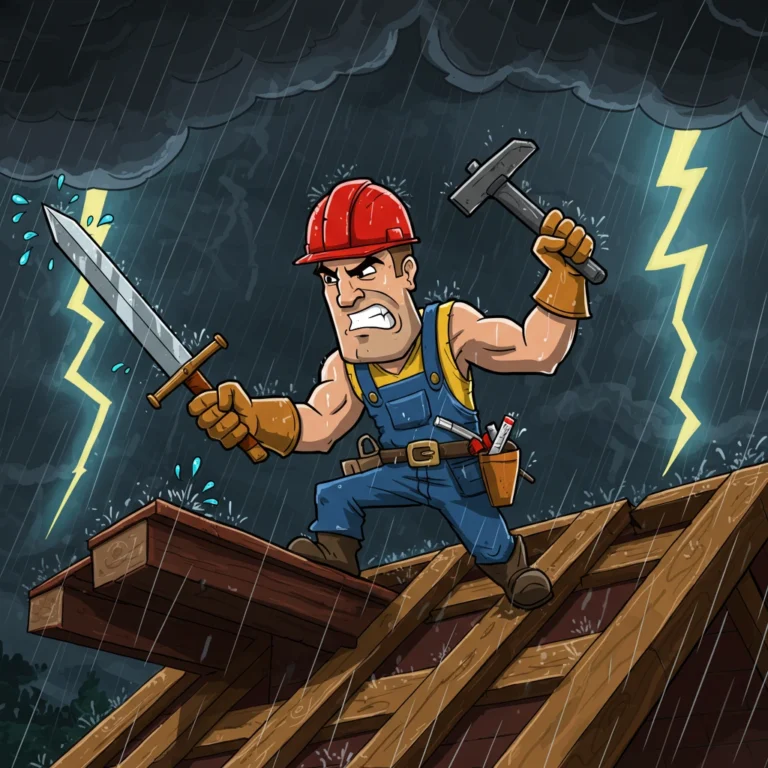
Delray Roof Alert: Shield Your Home from Summer Storms!
Living in beautiful Delray Beach means enjoying sun-drenched days, but it also means preparing for the intensity of Florida’s Summer Storms. These seasonal downpours, often accompanied by strong winds and the ever-present threat of hurricanes, can wreak havoc on your property, with your roof being the first and most critical line of defense. For both residential homeowners and commercial property managers in our coastal community, neglecting roof preparedness isn’t just an oversight—it’s a gamble against nature. This comprehensive guide is designed specifically for Delray Beach residents. We’ll walk you through understanding the unique risks our local climate poses, provide a proactive pre-storm checklist, explore advanced protective measures, discuss vital insurance considerations, and outline what to do during and after a storm. By taking these steps, you can significantly minimize potential damage, save on costly repairs, and ensure your property remains a safe haven, season after season. Let’s get your roof ready!
Why Summer Storms are a Major Threat to Your Delray Beach Roof
Delray Beach, with its stunning coastline and vibrant community, is a prime location. However, this South Florida paradise also sits directly in the path of challenging weather patterns, especially during the summer months. Understanding these threats is the first step in effective roof protection for your home or commercial building. The combination of intense heat, sudden torrential rain, high winds, and the looming possibility of tropical cyclones makes Summer Storms a formidable opponent for any structure. Your roof bears the brunt of this onslaught, and without proper preparation, the consequences can be severe and costly.
Understanding Delray Beach’s Unique Summer Weather Risks (Hurricanes, Tropical Storms, Intense Rain & Wind)
Delray Beach’s proximity to the Atlantic Ocean and the Gulf Stream means our summers are characterized by more than just sunshine. The hurricane season, officially running from June 1st to November 30th, brings the most significant threat. Even if a hurricane doesn’t make direct landfall, the outer bands can deliver tropical storm-force winds and drenching rain for extended periods. These aren’t your average showers; we’re talking about deluges that can overwhelm compromised drainage systems and winds strong enough to lift improperly secured roofing materials.
Beyond named storms, typical Delray Beach Summer Storms often develop rapidly, bringing with them:
- Torrential Rain: Florida’s summer rain can be incredibly intense, dropping several inches in a short time. This tests your roof’s ability to shed water efficiently. Any small leak or vulnerability can quickly escalate.
- High Winds: Gusts associated with thunderstorms can reach damaging speeds, capable of tearing off shingles, dislodging tiles, or turning unsecured rooftop equipment into dangerous projectiles. The coastal environment of Delray Beach often experiences higher sustained winds than inland areas.
- Lightning: Frequent lightning strikes pose a fire risk and can damage roofing components, especially metal ones if not properly grounded.
- Hail: While less frequent than in other parts of the country, hail can occur and cause significant impact damage to various roofing types.
The relentless cycle of intense sun and sudden, heavy rain also accelerates the wear and tear on roofing materials. Thermal shock – the rapid expansion and contraction from temperature changes – can cause materials to crack and degrade over time, making them more susceptible to summer storm roof damage.
The Cost of Neglect: Potential Damage and Financial Impact for Property Owners
For Delray Beach residential and commercial property owners, ignoring roof readiness for Summer Storms is a costly mistake. The potential damage extends far beyond a few missing shingles:
- Water Intrusion: This is the most common and often most expensive consequence. Leaks can lead to stained ceilings and walls, damaged insulation (reducing energy efficiency), mold growth (a serious health hazard), and compromised structural integrity of the roof deck and framing.
- Interior Damage: Water entering your property can destroy furniture, electronics, inventory (for businesses), and personal belongings.
- Mold Remediation: Once mold takes hold, especially in Florida’s humid climate, it can be difficult and expensive to eradicate, often requiring professional intervention.
- Structural Damage: In severe cases, high winds can cause partial or even complete roof collapse, leading to catastrophic losses.
- Increased Insurance Premiums: A history of claims can lead to higher insurance costs or even difficulty obtaining coverage.
- Business Interruption: For commercial properties, roof damage can mean forced closure, loss of revenue, and disruption to operations.
- Decreased Property Value: A poorly maintained or damaged roof significantly detracts from your property’s market value.
A case study from areas impacted by previous hurricanes in Florida consistently shows that properties with well-maintained and storm-prepared roofs fare significantly better than those neglected. For instance, after Hurricane Irma, analysis revealed that homes with newer roofs built to stronger codes or those that had undergone wind mitigation improvements sustained notably less damage [FEMA, 2018]. The investment in preventative maintenance and timely Delray Beach roof preparation for hurricanes pales in comparison to the potential cost of repairs and recovery after a major storm.
Residential vs. Commercial Roofs: Shared Vulnerabilities and Specific Concerns
While all roofs in Delray Beach face the threat of Summer Storms, there are some distinctions between residential and commercial properties:
Shared Vulnerabilities:
- Wind Uplift: Both sloped (common in homes) and flat/low-slope roofs (common in commercial buildings) are vulnerable to wind getting underneath the roofing material and lifting it.
- Water Ponding: If drainage is inadequate, water can pool, especially on flatter sections, leading to leaks and added weight stress.
- Debris Impact: Falling branches or wind-blown objects can damage any roof type.
- Flashing Failures: The seals around vents, chimneys, skylights, and roof edges are critical weak points on all roofs.
Residential Specifics (Often Sloped Roofs – Shingles, Tiles):
- Shingle/Tile Loss: Individual shingles or tiles can be blown off, creating immediate entry points for rain. Delray Beach homes with older three-tab shingles are particularly at risk.
- Gutter Overflows: Residential gutters can be easily overwhelmed by leaves and intense rain, causing water to back up under eaves.
- Tree Proximity: Larger trees common in residential landscaping pose a direct threat if not properly maintained.
Commercial Specifics (Often Flat/Low-Slope Roofs – Membranes, Built-Up Roofs):
- Drainage Systems: Commercial roofs often have more complex internal or scupper-based drainage systems that require diligent maintenance. Blockages can lead to significant water accumulation (ponding).
- Rooftop Equipment: HVAC units, vents, and other equipment mounted on commercial roofs create numerous penetrations that must be perfectly sealed. These units can also be dislodged by high winds if not properly secured.
- Membrane Punctures/Tears: Flat roof membranes can be punctured by debris or fail at the seams, especially under stress from wind or ponding water.
- Larger Surface Area: The sheer size of many commercial roofs means more area is exposed to the elements, and a small problem can escalate quickly. For example, a study by the Insurance Institute for Business & Home Safety (IBHS) highlights that proper sealing of seams and securing of rooftop equipment are critical for commercial roof performance in high winds.
Whether you own a home or a business in Delray Beach, a proactive approach to summer storm roof maintenance is non-negotiable for safeguarding your investment.
The Pre-Storm Checklist: Your Proactive Defense Plan
Waiting until a storm is brewing is too late. A proactive defense plan, executed well before the peak of Summer Storms season, is your best bet for protecting your Delray Beach property. This checklist outlines the essential steps every residential and commercial owner should take. Think of it as an annual health check-up for your roof, specifically tailored for Florida’s challenging climate.
Step 1: Schedule a Professional Roof Inspection – Your First Line of Defense
Before you do anything else, getting a professional assessment of your roof’s current condition is paramount. While you might spot obvious issues from the ground, a trained roofing contractor has the expertise and safety equipment to conduct a thorough examination. They can identify subtle weaknesses that could become major problems during Summer Storms. This is a crucial step for Delray Beach roof preparation for hurricanes.
What Delray Beach Inspectors Look For (Wind, Salt, Sun Damage):
In our coastal Delray Beach environment, inspectors pay special attention to:
- Wind Damage Indicators: Loose or lifted shingles/tiles, damaged flashing, stress cracks in flat roof membranes, particularly at the perimeter and corners where wind forces are highest.
- Salt Air Corrosion: Metal components like flashing, fasteners, and gutters can corrode more quickly due to salt spray. Inspectors will check for rust and deterioration.
- Sun/UV Degradation: Florida’s intense sun can bake roofing materials, causing asphalt shingles to become brittle and lose granules, or TPO/PVC membranes to degrade. They’ll look for cracking, blistering, or chalking.
- Previous Patchwork: Poorly executed past repairs can be weak spots.
- Water Intrusion Signs: Stains on the underside of the roof decking (visible from the attic), mold or mildew, and soft spots indicating moisture.
- Blocked Drainage: Clogged gutters, scuppers, or internal drains.
- Loose or Damaged Flashing: Around chimneys, vents, skylights, and wall junctions.
- Condition of Sealants: Dried, cracked, or missing caulk.
Choosing a Qualified Local Roofing Contractor:
- Licensed and Insured: Verify their Florida license and ensure they carry adequate liability and worker’s compensation insurance. This protects you.
- Local Reputation: Look for contractors with a strong, positive presence in the Delray Beach or Palm Beach County area. Check online reviews and ask for local references.
- Experience with Florida Storms: Choose a company familiar with hurricane-resistant roofing practices and local building codes.
- Detailed Inspection Report: A reputable contractor will provide a written report with photos and clear explanations of any issues found and recommended actions. Avoid those offering “free roofs” tied to insurance claims before a thorough inspection.
A professional inspection provides a roadmap for your storm preparations, helping you prioritize repairs and maintenance effectively.
Step 2: Clear Gutters & Downspouts for Uninterrupted Water Flow
This might seem like a simple task, but it’s incredibly vital, especially when preparing for Florida’s Summer Storms and their torrential downpours. Your gutters and downspouts are designed to channel rainwater away from your roof and foundation. If they are clogged, water will find alternative, often damaging, paths.
Risks of Clogged Gutters During Heavy Rains:
- Water Backup Under Roof: When gutters overflow, water can seep under the edge of your roofing material, rotting the fascia, soffit, and even the roof decking. This is a common cause of preventing roof leaks during tropical storms Delray.
- Foundation Damage: Water pouring directly down near your foundation can lead to soil erosion and foundation cracks over time.
- Siding Damage: Overflowing gutters can stain and damage your home’s siding.
- Pest Infestations: Clogged gutters full of damp leaves and debris are attractive breeding grounds for mosquitoes, termites, and rodents.
- Added Weight: The weight of water and debris in clogged gutters can cause them to sag, pull away from the house, or even collapse.
Ensure gutters are free of leaves, pine needles, twigs, and shingle granules. Flush downspouts to confirm they are clear. For commercial properties with internal drains or scuppers, these must be professionally inspected and cleared to prevent flat roof maintenance for heavy rain Florida issues like significant water ponding, which can strain the roof structure and lead to leaks. Consider installing gutter guards as a long-term solution, but remember they still require periodic checks.
Step 3: Inspect and Secure Roofing Materials
Once gutters are clear, focus on the roofing materials themselves. Any loose or damaged components are prime targets for wind and water intrusion during Summer Storms.
Shingles (Loose, Missing, Damaged):
For asphalt shingle roofs, common in Delray Beach residences:
- Look for shingles that are cracked, curled, blistered, or missing granules (which protect against UV rays and heat).
- Pay close attention to any shingles that appear lifted or are not properly adhered. Wind can easily get under these.
- A small dab of roofing cement can secure a loose shingle, but widespread issues may indicate the need for professional repair or replacement.
Tiles (Cracked, Slipped) – Common in Florida Architecture:
Concrete or clay tiles are popular in Florida for their durability and aesthetic, but they’re not immune:
- Check for cracked, broken, or chipped tiles. These can allow water to reach the underlayment.
- Ensure all tiles are securely fastened. Slipped tiles expose the underlayment and can create a domino effect in high winds.
- Mortar holding ridge and hip tiles can crack and deteriorate, needing re-application.
Flashing, Vents, and Seals – Critical Leak Points:
Flashing is the metal or membrane material that seals joints and transitions on your roof—around chimneys, vent pipes, skylights, satellite dish mounts, and where a roof meets a wall.
- Inspect all flashing for signs of rust, corrosion, dents, or displacement.
- Ensure it’s tightly sealed and lying flat against the roof. Any gaps can allow water to funnel directly into your home or building.
- Check the sealant (caulk) around these areas. Over time, it can dry out, crack, and pull away. Re-caulking vulnerable spots is a crucial part of summer roof maintenance checklist for Florida homes.
- For commercial flat roofs, pay extra attention to the seams of the membrane and around all rooftop penetrations.
Step 4: Trim Overhanging Trees and Landscaping
Trees are beautiful, but overhanging branches pose a significant threat during Summer Storms. Proactive tree trimming services near me for roof safety can prevent costly damage.
Reducing Projectile Risk & Debris Accumulation:
- Impact Damage: High winds can snap branches, sending them crashing onto your roof, puncturing materials, and even causing structural damage.
- Abrasive Wear: Branches constantly rubbing against your roof can wear away protective granules on shingles or scratch membranes.
- Debris Clogging Gutters: Leaves, twigs, and Spanish moss from overhanging trees are primary culprits for clogged gutters.
- Pest Access: Branches can provide a bridge for pests like squirrels and raccoons to access your roof and attic.
Trim branches so they are at least 6-10 feet away from your roofline. Remove any dead or dying trees that could fall onto your property during a storm. If you’re uncomfortable or the trees are large, hire a professional arborist. This small investment can save you from major headaches later.
Fortifying Your Roof: Advanced Protective Measures
Beyond basic maintenance, Delray Beach property owners should consider advanced measures to further strengthen their roofs against the severe Summer Storms our region faces. These steps can enhance durability, improve performance during extreme weather, and potentially lead to insurance discounts. Investing in these upgrades can be a smart move for long-term protection and peace of mind, especially when considering the best roofing materials for South Florida storms.
Understanding Your Attic: Ventilation and Early Leak Detection
Your attic plays a critical, often overlooked, role in your roof’s health and longevity, especially in Florida’s climate. Proper attic ventilation and regular inspections from within can be key to preventing roof leaks during tropical storms Delray and mitigating heat damage.
Signs of Poor Ventilation and Moisture in Florida’s Humidity:
Florida’s high humidity and intense summer heat make attic ventilation essential. Without it:
- Heat Buildup: Trapped hot air can “bake” your roofing materials from below, shortening their lifespan. It also increases your cooling costs as your AC works harder.
- Moisture Condensation: Warm, moist air condensing on the cooler underside of the roof deck can lead to wood rot, mold growth, and damp, ineffective insulation. This is a major concern highlighting the importance of attic ventilation Florida humidity.
- Ice Dams (Not typically a Delray issue, but illustrates the principle): In colder climates, poor ventilation leads to ice dams. In Florida, the equivalent is superheated attics that stress materials.
What to look for from inside your attic:
- Daylight Penetration: If you see daylight through the roof boards, you have holes that need immediate attention.
- Water Stains or Streaks: Dark stains on the underside of the roof deck or rafters are clear signs of past or current leaks.
- Mold or Mildew: Black, green, or white splotches indicate excessive moisture.
- Damp or Compressed Insulation: Wet insulation is ineffective and a sign of leaks.
- Rust on Nails: Nails protruding through the roof deck that are rusty indicate condensation.
Ensure your attic has a balanced ventilation system (e.g., soffit vents for intake and ridge vents or turbine vents for exhaust). If you suspect issues, consult a roofing professional to assess your attic’s ventilation adequacy.
Considering Roof Upgrades for Long-Term Resilience
If your roof is nearing the end of its lifespan, or if you’re looking for superior protection, upgrading your roofing materials can be a wise investment.
Impact-Resistant Shingles: A Worthy Investment?
Impact-resistant (IR) shingles are designed to withstand hail and debris impact better than standard asphalt shingles. They are rated Class 3 or 4 (Class 4 being the highest).
- Benefits: Reduced likelihood of damage from hail and wind-blown debris, potentially longer lifespan, and often qualify for homeowner’s insurance discounts (check with your provider).
- Consideration: The impact resistant shingles cost Florida is higher upfront, but can pay off in reduced repairs and insurance savings over time. Given the frequency of Summer Storms and potential for hurricane-related debris, they are a strong consideration for Delray Beach homes.
Metal Roofing: Durability Against Florida’s Elements
Metal roofs (aluminum, steel, copper) are increasingly popular in Florida for their exceptional durability.
- Benefits: Highly resistant to high winds (often rated for 140+ mph), fire-resistant, long lifespan (50+ years), energy-efficient (reflective coatings can lower cooling costs), and require less maintenance than many other materials. Many styles mimic traditional shingles or tiles.
- Consideration: Higher initial cost is the main drawback, but their longevity and resilience make them one of the best roofing materials for South Florida storms. Proper installation is critical.
Protective Roof Coatings for Enhanced Sealing
For certain roof types, especially flat or low-slope roofs and some older shingle roofs, reflective or elastomeric coatings can extend life and improve performance.
- Benefits: Seal small cracks and pinholes, provide a waterproof barrier, reflect UV rays (reducing heat absorption and cooling costs), and can improve resistance to algae and mildew.
- Consideration: Not a solution for a failing roof, but can be an excellent preventative measure or life-extender for a roof in decent condition. The type of coating must be compatible with your existing roofing material. Professional application is usually recommended for best results.
Special Considerations for Flat Roofs (Common in Commercial Properties & Some Homes)
Flat and low-slope roofs, prevalent on Delray Beach commercial buildings and some modern residential designs, have unique challenges during Summer Storms, particularly concerning flat roof maintenance for heavy rain Florida.
Ensuring Proper Drainage and Ponding Prevention:
- Ponding Water: Any water that remains on a flat roof for more than 48 hours after rain is considered ponding water. This adds significant weight, stresses the roof membrane, can lead to material degradation, and eventually cause leaks.
- Drainage Systems: Internal drains, scuppers, and crickets (structures that direct water to drains) must be kept clear of debris. Even a partially clogged drain can lead to significant ponding.
- Regular Inspections: Seams in membrane roofs (TPO, EPDM, modified bitumen) are vulnerable points. Flashing around parapet walls and rooftop equipment must be meticulously maintained.
- Slope: Even “flat” roofs should have a slight slope to direct water towards drains. If ponding is a persistent issue, the roof may need to be re-sloped or additional drains installed.
A commercial roof inspection Delray Beach hurricane season should heavily focus on the drainage system’s capacity and condition. Preventative maintenance is key to avoiding catastrophic failures during heavy rainfall.
Insurance & Documentation: Your Financial Safety Net
While proactive maintenance and robust roofing materials are your first lines of defense against Summer Storms, having the right insurance coverage and proper documentation is your crucial financial safety net. For Delray Beach property owners, understanding your policy and being prepared can make a significant difference in the aftermath of a storm. Navigating filing a roof damage insurance claim in Florida can be complex, so preparation is key.
Reviewing Your Homeowner’s or Commercial Property Insurance
Don’t wait until a storm is on the horizon to understand what your insurance policy covers – and what it doesn’t. Policies can vary significantly.
Understanding Windstorm and Hurricane Coverage:
- Hurricane Deductible: Most Florida policies have a separate, higher deductible for hurricane damage (triggered by a named hurricane). This is typically a percentage (e.g., 2%, 5%, 10%) of your home’s insured value, not a flat dollar amount. Understand what your percentage is and how it translates to an out-of-pocket cost.
- Windstorm Coverage: Ensure your policy includes coverage for wind damage from storms other than named hurricanes (e.g., severe thunderstorms).
- Flood Insurance: Standard homeowner’s and commercial property insurance does not cover flood damage (e.g., from storm surge or overflowing bodies of water). This requires a separate policy through the National Flood Insurance Program (NFIP) or private flood insurers. Given Delray Beach’s coastal location, flood insurance is highly recommended.
- Coverage Limits (Dwelling/Building & Contents): Ensure your coverage limits are sufficient to rebuild your property and replace its contents at current market costs.
- Actual Cash Value (ACV) vs. Replacement Cost Value (RCV): RCV policies cover the cost to replace damaged property with new materials, while ACV policies factor in depreciation. RCV is generally preferable for roofs. Understand which one you have, as it significantly impacts your claim payout for an aging roof.
- Exclusions: Pay close attention to any exclusions in your policy, such as for neglect, wear and tear, or specific types of damage.
The Importance of “Before” Photos and Maintenance Records:
In the event of a claim, being able to demonstrate the condition of your roof before the storm is invaluable.
- Photographic/Video Evidence: Take clear, dated photos or videos of your entire roof from multiple angles annually and after any repairs or maintenance. Also, photograph your attic’s underside.
- Maintenance Log: Keep detailed records of all roof inspections, repairs, and maintenance work performed, including invoices and contractor details.
- Proof of Upgrades: If you’ve invested in upgrades like impact-resistant shingles or a new roof, keep all documentation. This can be crucial for signs of roof damage after a storm claims.
This documentation can help expedite your claim and counter any assertions from the insurer that the damage was pre-existing or due to neglect.
The My Safe Florida Home Program: Potential Assistance for Delray Beach Residents
The My Safe Florida Home program is a state-sponsored initiative designed to help eligible Florida homeowners identify and make improvements to strengthen their homes against hurricanes. This can be a valuable resource for Delray Beach residents.
- How it Works: The program typically offers free wind mitigation inspections to identify potential weaknesses in a home’s ability to withstand hurricane-force winds. Based on the inspection report, homeowners may be eligible for grants to help offset the costs of recommended improvements.
- Eligible Improvements: These often include upgrading roof-to-wall connections, reinforcing roof decking attachment, installing impact-resistant windows and doors, and improving the strength of gable-end bracing. Some roofing system upgrades may also qualify.
- Benefits: Besides making your home safer, these improvements can often lead to significant discounts on your homeowner’s insurance premiums. A wind mitigation inspection Delray Beach is the first step.
- Check Eligibility: Program details, funding availability, and eligibility criteria can change. Delray Beach homeowners should visit the official My Safe Florida Home website or contact them directly for the most current information on My Safe Florida Home program eligibility.
Taking advantage of such programs can make your home more resilient and potentially save you money in the long run.
During and After the Storm: Immediate Actions & Next Steps
Despite your best preparations, severe Summer Storms can still cause damage. Knowing what to do during and immediately after a storm hits Delray Beach is crucial for safety and for mitigating further harm to your property. Prompt and proper action can make a significant difference in the recovery process.
Safety First: What to Do (and Not Do) During a Summer Storm
Your personal safety and that of your family or employees is the absolute priority during any severe weather event.
- Stay Indoors and Away from Windows: High winds can turn debris into dangerous projectiles, and lightning is a serious threat.
- Monitor Weather Alerts: Keep a battery-operated weather radio or your cell phone (if charged and service is available) tuned to local news and NOAA Weather Radio for updates and warnings.
- Avoid Using Landlines and Electrical Appliances: Lightning can travel through electrical systems and phone lines.
- Do NOT Go on Your Roof: Never attempt to inspect or repair your roof during a storm. It’s incredibly dangerous. Even if the rain stops, winds can still be gusty and the roof surface slippery.
- Prepare for Power Outages: Have flashlights, extra batteries, and a charged power bank for your phone.
- If Water Enters Your Home:
- If safe to do so, try to move valuable items away from the leak.
- Place buckets or containers to catch dripping water.
- Be cautious of electrical outlets or appliances near wet areas. If there’s extensive flooding or risk of electrical shock, evacuate the area and call your utility company if you see downed power lines.
How useful was this post?
Click on a star to rate it!
Average rating 5 / 5. Vote count: 3
No votes so far! Be the first to rate this post.
